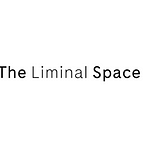FIVE GOLD THINGS: DAY THREE
Welcome to The Liminal Space’s third of five dispatches on Five Gold Things for 2024. We’ve previously covered the themes of animism and light. And now…
IN THE PIPELINE
Maybe our recent move to a new HQ in Blackfriars, under which the buried river Fleet burbles, has upped our interest in the hidden flows beneath our feet.
This year we were really interested in Julia Jamrozik and Coryn Kempster’s Pipelines Installation in Colorado for the Biennial of the Americas, a simple and colourful public art piece that was built from water and sewer pipes.
The Biennial was attended by hundreds of city level policy makers, and the artists wanted to invite them, and the public, to sit among the materials of Colorado’s hidden infrastructure to prompt a conversation about growing scarcity of natural resources. When you’re eating your sandwich perched on the enormous apparatus that gets the water to your taps, it’s much harder to talk platitudes. How do we actually manage resources that we’ve previously taken for granted, and what decisions or trade-offs might we need to make in future?
Art and design has a long heritage of surfacing invisible infrastructure. In 1986, the artist Nancy Holt’s visit to Alaska prompted her piece Pipeline, based on the trans-Alaskan pipelines, which featured oil spilling out onto the floor. More recently, designers and photographers have drawn attention to sewer systems and undersea internet cables. We’d argue that our ability to campaign on or debate the issues with infrastructure is much easier if everyone can point to a thing — like the safety concerns about electrical pylons in the second half of the 20th century, or our debate on wind turbines today. With invisible underseas cabling, it can be difficult to remember it’s there, let alone engage with the implications.
Earlier this year we worked with the V&A to design a new experience for young people at their V&A East Storehouse venue, which opens next year. In our design process we worked with several local community groups and when asked about the spaces they’d love to get inside, one of the most common answers was Parliament. They wanted to see the apparatus behind decision-making. As the UK election approaches, we will possibly see growing interest in the systems and mechanisms at play around us. And as our infrastructure and power dynamics continue to shift, we will need to be shown what the money, power and utilities flows actually look like. We need different shapes to see because without the pipelines in front of us, at scale, we can’t properly question them.
Next up: things take a turn for the remarkable as we examine the world of synthetic organoids…
Contributions from Lizzie Olstrom
